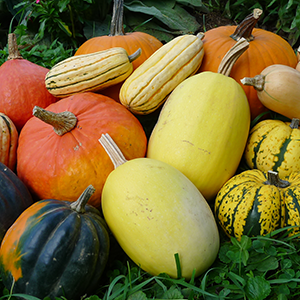
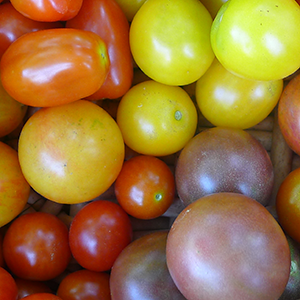
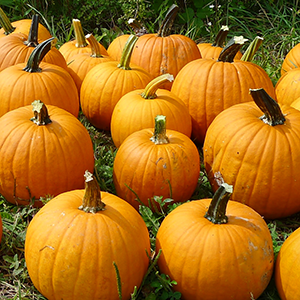
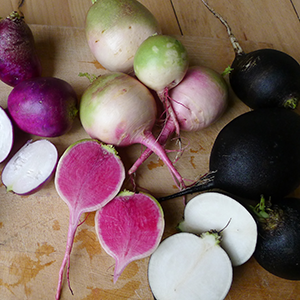
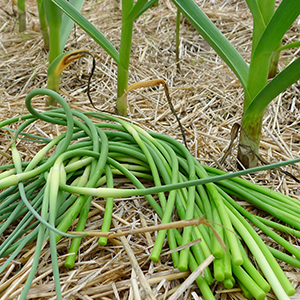
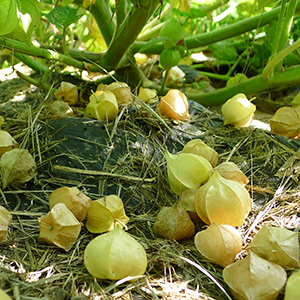



News and Notes | The Anchor Run Blog
Posts Filtered by Month - November 2021 |
Show Recent Posts
November 29, 2021
Natural Immune Support
by Farmer Derek
Natural Immune Support
by Farmer Derek
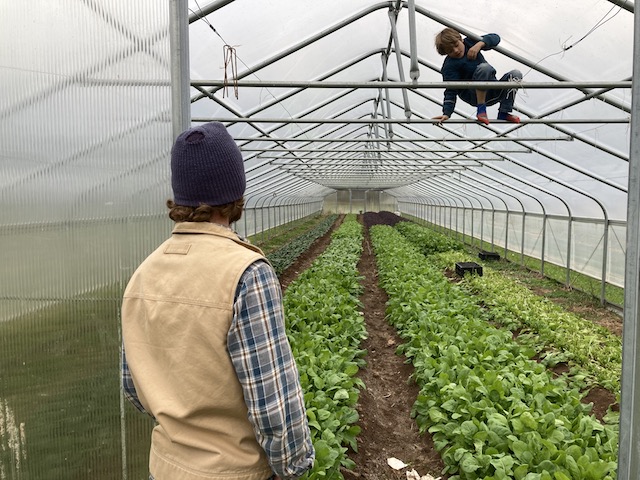
Greens in the Hoop Tunnel (before being covered).
Late Fall Harvest #3 (Week A) should include sweet potatoes, cabbage, carrots, beets, daikon/specialty radishes, kohlrabi, potatoes, garlic, lettuce mix, arugula, mustard greens, swiss chard, kale, radicchio, and rosemary. Some items will be a choice.

November 29, 2021
Digestive Aids
by Farmer Derek
Digestive Aids
by Farmer Derek
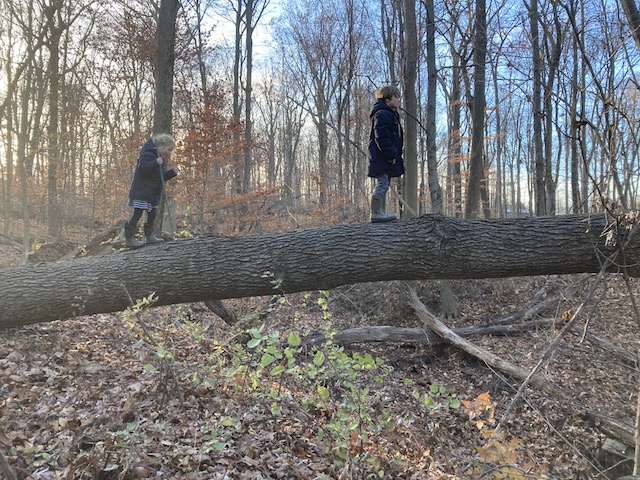
Adventure in the woods.
Hope you had a good holiday and are ready to eat a lot of vegetables!
To follow up on last week's tough decision to provide extra protection to the tunnel greens or not, we did decide to play it safe and not throw caution to the wind. Better safe than sorry my friends. After all, once the hoops and covers are in place all we have to do is remove them once in a while to harvest or vent on hot days. We also assume that at some point this fall and early winter temperatures will actually bottom out at a damaging degree. This time around the lows didn't get quite cold enough but based on prior experience we never really know. Earlier this fall we woke up to temperatures in the mid-20s after a forecast low-30s night.
Of course, we played with the variables a bit. We only covered portions of tunnels where crops haven't been harvested yet except for the curly kale in the high tunnel, which we left to fend for itself. Plants are too big to safely cover (fabric needs to be suspended well above plants to allow for that thermal warm air pocket; if it rests on plants we've seen worse damage than actually no cover). Kale is also super hardy. In Caterpillar Tunnel 1, where we've already harvested head lettuce and lettuce mix (which will regrow), we left endwalls open. In Caterpillar Tunnel 2, previously harvested arugula and mustard greens, that are happily regrowing, were left uncovered next to covered plants. We'll be able to observe success or failure of cold tolerance of these crops.
Besides dealing with the complexities and intricacies of cold season growing, we're tackling other items from our master farm and life winter to-do list. Seeds, strawberry plants, fertilizer, soil amendments, and greenhouse supplies have been ordered. Potting soil and potatoes should be secured this week. The master seed list and seeding schedule has been updated but we still need to extract the greenhouse and transplanting specific list as well as cross reference crop family bed feet and planting dates to facilitate updating the master crop rotation. There's a lot of maintenance and repair work to do: fenceline clean up and rehabilitation (pesky deer have begun thwarting 8' netting); barrel root washer overhaul; annual tractor and machine servicing; employee housing remodeling; etc, etc, etc. It's more or less the same as past winters though for sure there are more big projects going on now and I can't relax quite as much as I'd like to just yet. At least we're enjoying a pretty nice and dry autumn which will allow for outdoor admin-balancing work and fun time.
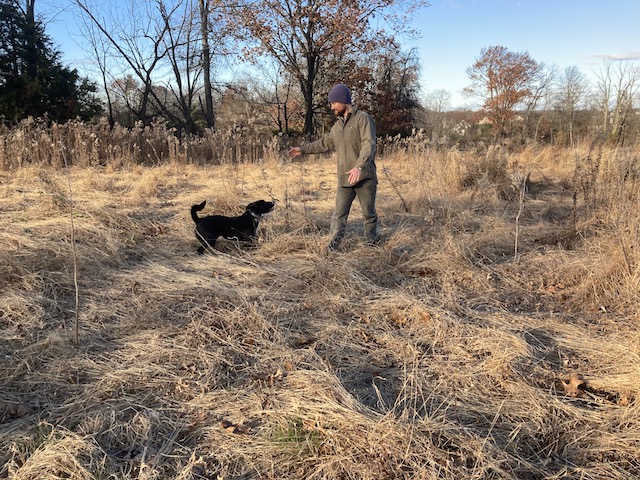
Farm dog training.

November 21, 2021
Holiday Ingredients!
by Farmer Derek
Holiday Ingredients!
by Farmer Derek
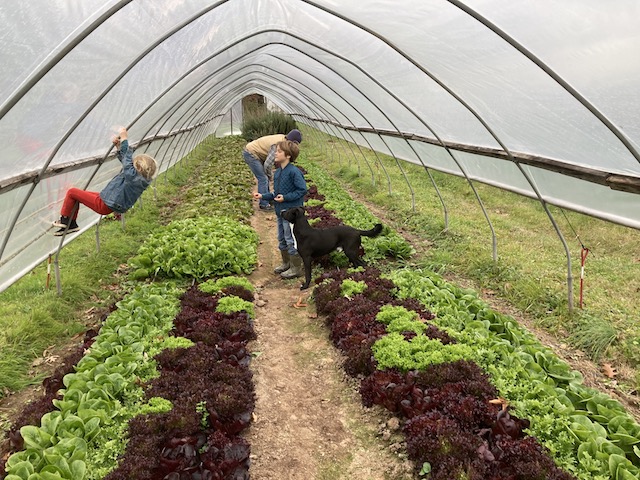
Lettuce mix, head lettuce, radicchio, escarole, and rosemary in the Hoop House.
Late Fall Harvest #2 (Week B; Tuesday & Saturday pick up this week due to holiday!) should include sweet potatoes, potatoes, carrots, beets, radishes, kohlrabi, garlic, lettuce mix, arugula, mustard greens, swiss chard, kale, radicchio, rosemary, and head lettuce. Some items will be a choice.

November 21, 2021
Pick Up Day and Time Reminder!
by Farmer Derek
Pick Up Day and Time Reminder!
by Farmer Derek
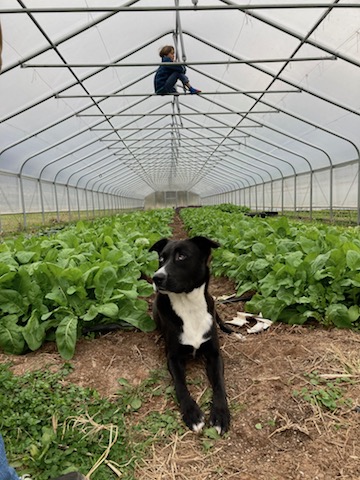
Finch and Gabe and arugula in the Hoop Tunnel.
Log in here to view your share, pick up day and week, and balance.
Late Fall CSA Pick Up Schedule:
- Week 2/B - Tue 11/23 1-7pm or Sat 11/27 11am-1pm (Thanksgiving week)
- Week 3/A - Wed 12/1 1-7pm or Sat 12/4 11am-1pm
- Week 4/B - Wed 12/8 1-7pm or Sat 12/11 11am-1pm
- Week 5/A - Wed 12/15 1-7pm or Sat 12/18 11am-1pm
- Week 6/B - only Wed 12/22 1-7pm (Saturday is Christmas. If you're Saturday Week B and can't make Wednesday 12/22 let us know and we'll try to accommodate.)

November 21, 2021
Cold Prep (or not)
by Farmer Derek
Cold Prep (or not)
by Farmer Derek
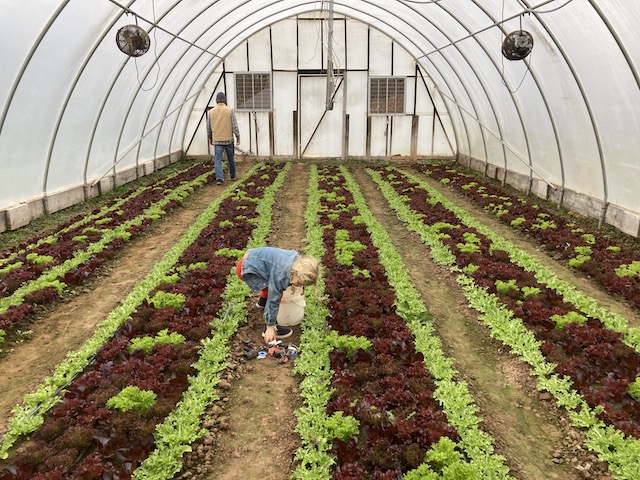
Lettuce mix in the Greenhouse, where supplemental nighttime heat keeps inside temperatures just above freezing.
All season long we monitor the overall weather forecast but this time of year we focus more on the temperature than the precipitation prediction. Because just about everything we're currently harvesting is under protection in a tunnel and we're no longer disturbing outside soil, rainfall doesn't matter so much. We're still retrieving field kale because that has a very high tolerance to cold and sometimes even overwinters. All other crops, plus additional kale, reside inside. However, those cold tolerant crops have a varying degree of ability to withstand cold temperatures. Aforementioned kale, as well as spinach, are the most hardy, followed by bok choy, arugula, mustard, chard, and lettuce. Age of the crop matters too. Generally, younger is hardier if mature crops spent most of their life growing in warmer conditions.
At this point all of the crops in the tunnels have been exposed to sub-freezing conditions a few times so they should be fairly well acclimated. The roof overhead prevents moisture from settling and freezing on leaf surfaces and causing frost damage that way. During the day the sun heats the indoor space and closing it up at night hopefully traps some heat to keep tunnel temperatures warmer than outside. If nighttime temperatures are forecast to bottom out in the low 20s or teens we erect an interior tunnel which adds even greater protection by keeping warmer air right around the plants.
Over the years crops have survived and gone on to thrive even after single-digit outdoor temperatures. Interior covers kept the temperature in the mid and upper 20s around the plants. They froze, looked lifeless on the ground, then a few days later after temperatures warmed a bit, they perked up and resembled their good old selves.
This coming week I'm now seeing lows forecast in the mid-20s which is on the cusp of breaking my low-temperature-confident-no-damage-will-occure threshold. I may hold out and give full trust to the plants, or I may give in and provide the extra protection. Why not just add the extra cover and be done with it? Good question. Trying to erect interior hoops around large and mature plants is challenging to accomplish without damaging the crops or getting them dirty. Putting extra covers over the hoops traps more moisture and can sometimes promote mold/rot/decay due to lack of airflow and requires removal during warm sunny days. The covers can be a pain to work with due to their size. Why do it if the plants don't really need it? Hopefully growing during this time of year for 10 seasons now enables us to better predict an outcome and avoid either unnecessary work or unnecessary damage. We shall see.
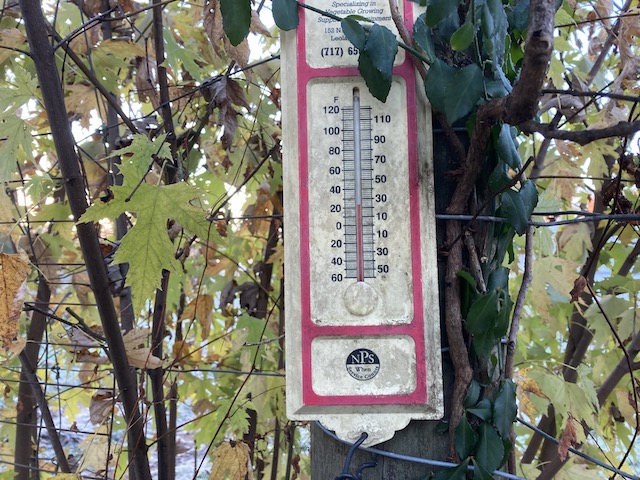
Thermometer showing 24 degrees outside of one of our fields a couple of weeks ago when forecast predicted lows in the 30s. What happens when they predict lows in the mid-20s?

November 15, 2021
Mid-November Bounty
by Farmer Derek
Mid-November Bounty
by Farmer Derek
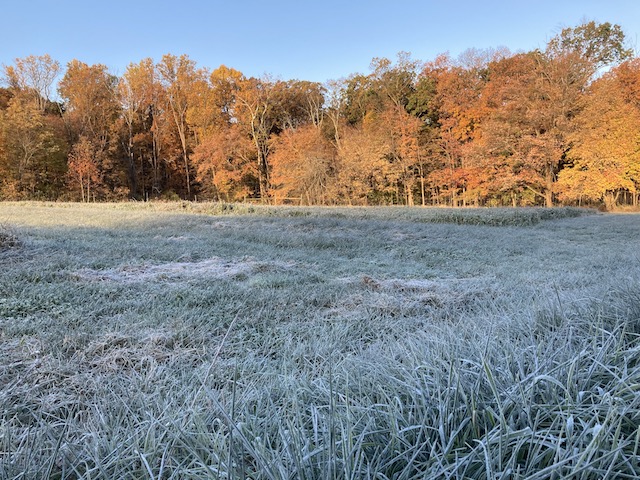
Frosty sunrise autumn colors tree scene.
Late Fall Harvest #1 (Week A) should include sweet potatoes, potatoes, carrots, beets, radishes, kohlrabi, garlic, lettuce mix, arugula, mustard greens, swiss chard, kale, radicchio, rosemary, and head lettuce. Some items will be a choice.

November 15, 2021
Pick Up Day and Time Reminder!
by Farmer Derek
Pick Up Day and Time Reminder!
by Farmer Derek
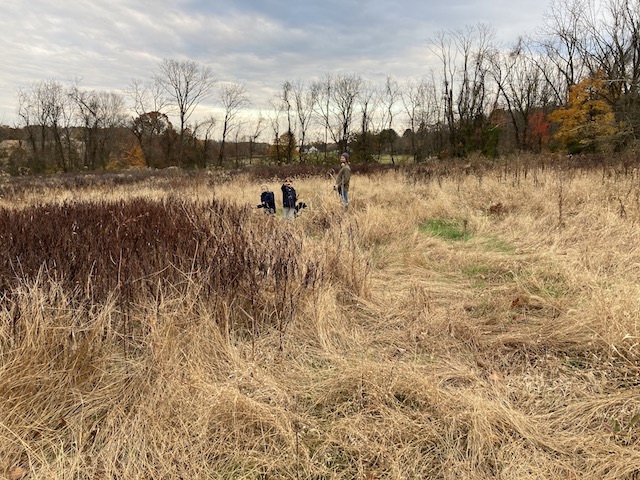
A fall hike through Anchor Run Farm's fallowed fields.
Log in here to view your share, pick up day and week, and balance.
Late Fall CSA Pick Up Schedule:
- Week 1/A - Wed 11/17 1-7pm or Sat 11/20 11am-1pm
- Week 2/B - Tue 11/23 1-7pm or Sat 11/27 11am-1pm (Thanksgiving week)
- Week 3/A - Wed 12/1 1-7pm or Sat 12/4 11am-1pm
- Week 4/B - Wed 12/8 1-7pm or Sat 12/11 11am-1pm
- Week 5/A - Wed 12/15 1-7pm or Sat 12/18 11am-1pm
- Week 6/B - only Wed 12/22 1-7pm (Saturday is Christmas. If you're Saturday Week B and can't make Wednesday 12/22 let us know and we'll try to accommodate.)

November 15, 2021
Late Fall Ready
by Farmer Derek
Late Fall Ready
by Farmer Derek
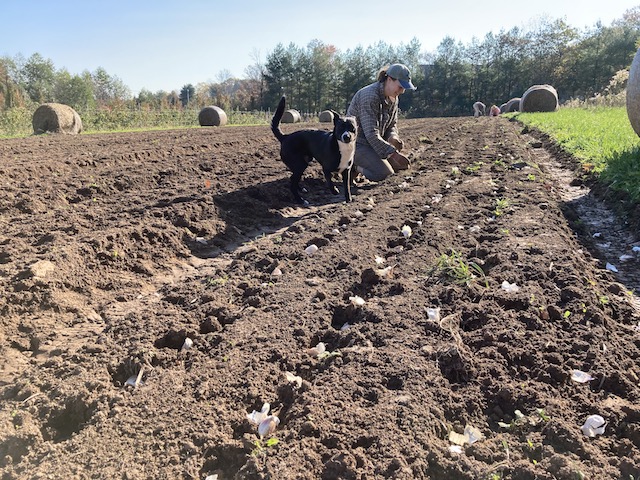
Farmer Addie and farm dog Finch planting the 2022 garlic.
Welcome to the 2021 Late Fall CSA season! This is the 10th year we've offered an extended season harvest, which is hard to believe. It feels like just yesterday we were beginning to wrap our heads around season extension and distributing shares this time of year. There's been a lot of experimentation and trial and error to identify the best crops to grow and harvest as well as store through the winter months. We're very close to having our systems in place but of course will always continue to test, modify, tweak, especially when it comes to fresh greens. Our tunnel footprint, where the vast majority of our greens are harvested this time of year, has more than quadrupled since year one. After dealing with floating row covers and low hoops in the field for a few years it became very apparent that to grow into the winter in a less stressful manner tunnel space is essential. Wind, snow, and deer have wreaked havoc on outdoor fabric, not to mention the challenge of trying to harvest in freezing conditions, completely exposed to whatever weather is happening on the days we need to harvest. Our storage space has triple since year one, too. We now have three different insulated, climate controlled, rodent proof storage rooms, one for cold and humid (beets, daikons, cabbage, carrots, greens, etc), cold and dry (onions, garlic, potatoes) and relatively warm (sweet potatoes). One upgrade we discussed but haven't implemented (yet?) was adding heat to the pick up room area (except for the occasional space heater when outside temperatures are below freezing). When we were entertaining the idea to distribute continuously through the winter months we seriously thought about this upgrade, but we've since discontinued the desire to try to harvest and distribute in January and February, except for the occasional flash sale. As of now a 32-week harvest season feels long enough. In January we try to get off the farm for a much needed break. In February preparations begin in earnest for the upcoming growing season. We exit the Persephone period (less than 10 hours of daylight) and tunnel greens begin a strong regrowth period. This is when we most likely will host a flash sale or two. By late February we're back in the greenhouse seeding for outdoor spring transplanting and the cycle begins again. Thank you for joining us for this segment of the journey!
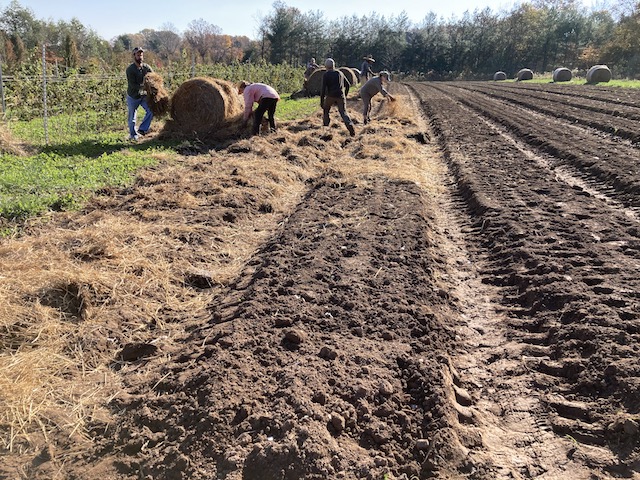
Mulching to insulate the garlic cloves, smother weeds, and retain moisture.

November 7, 2021
A Satisfying Finale!
by Farmer Dana
A Satisfying Finale!
by Farmer Dana
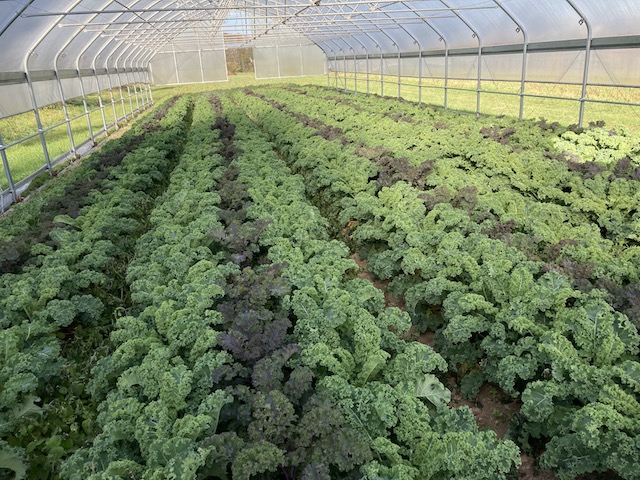
Gorgeous kale in the high tunnel!
Harvest #26 (Week B) should include sweet potatoes, potatoes, carrots, beets, radishes, kohlrabi, fennel, sweet peppers, hot peppers, garlic, lettuce mix, arugula, mustard greens, swiss chard, kale, and head lettuce. Some items will be a choice. U-pick should include some herbs.
*Sweet potatoes will be distributed in their natural harvested state (unwashed)*

November 7, 2021
Final Work Opportunity!
by Farmer Derek
Final Work Opportunity!
by Farmer Derek
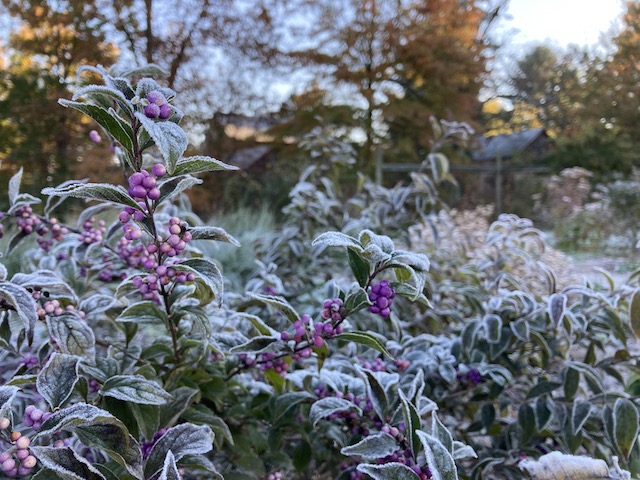
Frost all over the beautyberry.
This is the final week to work on the farm this season to satisfy the discount for your CSA share (if you signed up for a 'share with work discount that is')! We're planning to plant and mulch and possibly clean up some fence lines. The weather forecast looks perfect!
Workshift policy reminder: If you signed up for a share with work discount your share cost is reduced by $15 per worked hour (8 for Full, 6 for Medium, 4 for Half). If you're unable to satisfy the work requirement for the discount please remit a check to cover the share cost.
This week's workshift schedule:
- Tuesday 11/9 10am-12pm
- Tuesday 11/9 1-3pm
- Wednesday 10/10 10am-12pm
- Wednesday 10/11 1-3pm
Please bring gloves, water, a hat, and sturdy shoes! We meet under the large red maple at the end of the barn by the pick up room.

November 7, 2021
Last week to sign up for Late Fall CSA!
by Farmer Dana
Last week to sign up for Late Fall CSA!
by Farmer Dana
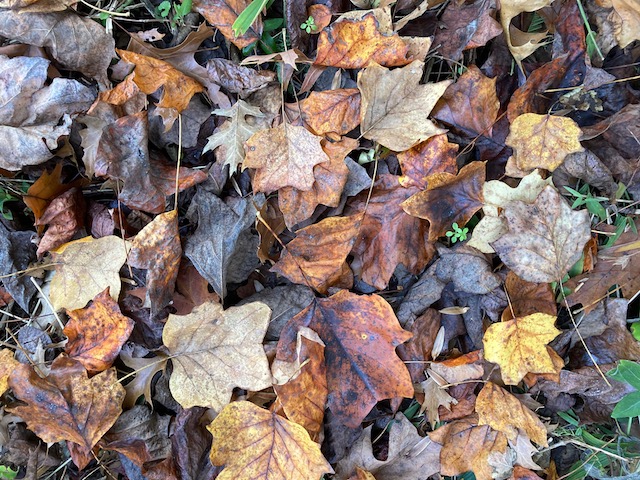
If you're interested in continuing your weekly or biweekly collection of local organic farm fresh produce through the holidays, now is the time to sign up for the Late Fall CSA, which begins the week of 11/15. To join us, sign up here.

November 7, 2021
Good Food Around the Bend
by Farmer Derek
Good Food Around the Bend
by Farmer Derek
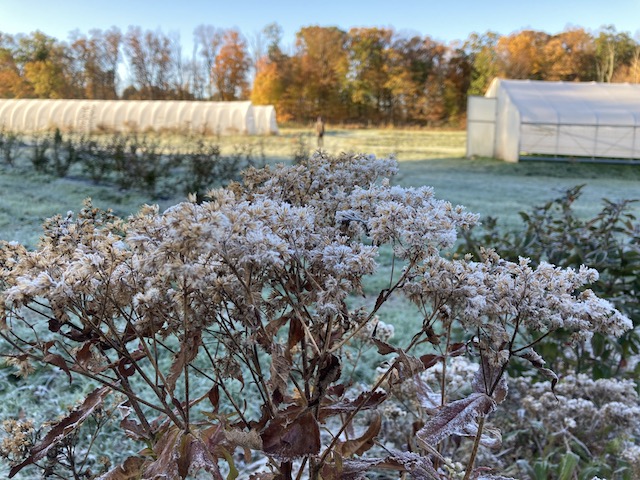
Frost hairs covered nearly everything on the farm 5 mornings in a row last week with temperatures bottoming out in the mid-20s.
Well that seemingly came out of nowhere! From no frosts to 5 consecutive frozen mornings just like that. Thankfully the crops we grow this time of year are hardy enough to tolerate this wild swing (sadly except for the lingering peppers). We hope for a slow transition to cold temperatures but this time around we bypassed the 30s and went right into the 20s. Praise be to the plants for getting through it unscathed. Since the original lows were forecast only for the low 30s we didn't take any extra precautions except for lowering the sides of the tunnels a bit but not all the way. I was surprised that first morning when the temperature obviously went much lower than the forecast 33 and woke up to a blanket of heavy frost and mildly frozen plants even in the tunnels. Just having that roof over their heads though keeps the frost from settling on top of the crops and burning the leaves, blemishing them and eventually causing that dead tissue to deteriorate. But by leaving the doors open and sides slightly up, enough subfreezing air crept in anyway giving them a good taste and wake up call for late fall and winter weather. If anything, it should help slow the growth of some of the tunnel crops that were speedily reaching for the sun during this overall balmy fall.
While mornings were too cold to comfortably do much outside and fields remained moist I spent a lot of time preparing plans and making purchases for next growing season. I like to do a lot of the crop planning early in the slower season while everything is still relatively fresh in my mind. I also reworked the spreadsheets for our seed information, greenhouse seeding, transplanting, and crop rotation bed feet data into one spreadsheet so I can basically update all of that simultaneously which will greatly expedite the process and limit my computer staring. It's also sort of necessary because I need to know how much of a crop and variety we're growing so I can most accurately order the correct number of seeds because we don't like to save seeds from one season to the next due to their sometimes unpredictable loss of viability. I do really enjoy planning the growing season from the comforts of a warm house with some good music going. Because we mostly grow annual crops we start fresh each year with expectations of perfection.
To hope for the best crops the following year we need to collect and record whatever data we can use to make good decisions and plan. Most of it begins with soil health, our number one resource. We collect soil samples in the early fall and send them to the lab for analysis. The results drive our inputs, highlighting mineral concentrations, organic matter, pH, etc. We couple the results with perceived health of cash crops and cover crops. Since our soils here have been managed organically for almost 20 years and we have tests going back that far, taken every three years, we have a good idea of the direction our farm management is going. Suffice it to say, our soils are in really good shape and we mostly just need to apply maintenance amounts of compost, fertilizers, and amendments. But because it's not only overall amounts but also ratios of the minerals, minor tweaking does take place here and there. For example, based on the this year's soil test, one of our fields is deficient in potassium relative to others and the organic fertilizer we'll add there next year will have more of that than say phosphorous. It's all a work in progress, but the goal is sustainability and regeneration.
Thank you for your support!

November 7, 2021
A Tasty End to the Main Season
By Linda Dansbury
A Tasty End to the Main Season
By Linda Dansbury
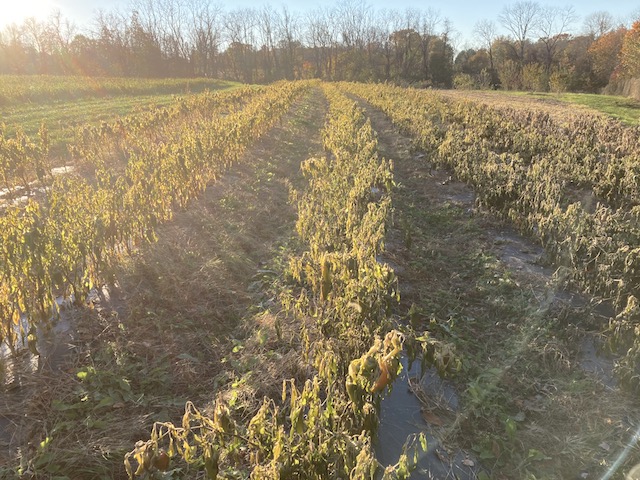
Sweet and hot peppers, last of the summer crops, could not withstand nighttime temperatures in the 20s. Expecting this, we harvested all the good fruit beforehand.
With my own yard work starting to be under control, I was able to to turn some of my time to cooking up delicious dishes! You will see I used a lot of winter squash - I typically don't cook it up until the weather starts to get cold because there are still so many other veggies to use.
Beets - I have mentioned the Chocolate Beet Cake in prior writings as suggestions for the beets, but haven't actually made the cake in awhile until this week - it is time consuming, but the end result is a moist, rich, delicious dessert, packed with beets. Yum...
Potatoes, sweet potatoes - one of my favorites of the fall is what I like to call "mixed mash". This time, we just did the 2 potatoes, but in the past I have added turnips, carrots and/or rutabaga. Made it for guests and they also loved the combination.
Potatoes, peppers, garlic, leeks, turnips, kohlrabi - roasted these delicious veggies and made a lot so the next night I had a delicious frittata. Due to the inclusion of sweet peppers, it almost seemed like a hash.
Bok Choy - made the Spicy Roasted Bok Choy - I just love this dish.
Bok choy, garlic, kale, peppers (sweet and hot), cauliflower - made a delicious stir fry. I tend to look these up on-line and find a sauce I want to make and then use whatever veggies and a protein.
Winter squash, hot pepper, onion and garlic - made a Vietnamese "pumpkin" soup - most of the rest of the world just uses pumpkin as the generic term for winter squash. For this very simple recipe, use ground pork (locally raised provides the best flavor), which you marinade in a bit of fish sauce, salt, pepper, and just a teaspoon of sugar. Saute onions and garlic and then add pork to brown. Add water and cook for a few minutes, add a good amount of cut up squash and simmer until the squash is tender. Top with chopped cilantro, basil and thinly sliced hot pepper.
Leeks, garlic, winter squash - made an Indian spiced soup. So good and warming.

POSTS BY TYPE
POSTS BY MONTH

